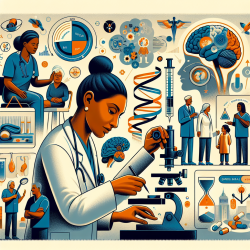Understanding Adolescent Suicidal Behavior through Machine Learning
Adolescent mental health is a critical area of concern, particularly when it comes to predicting and preventing suicidal thoughts and behaviors (STB). A recent study titled Predicting suicidal thoughts and behavior among adolescents using the risk and protective factor framework: A large-scale machine learning approach sheds light on this pressing issue by utilizing advanced machine learning techniques to identify key risk and protective factors.
Key Findings from the Study
The study analyzed data from over 179,000 high school students in Utah, collected through the Communities That Care (CTC) Youth Survey. By employing machine learning algorithms, researchers achieved a 91% accuracy rate in predicting STB among adolescents. The analysis identified ten key predictive factors, which can be grouped into four main categories:
- Peer-Individual Domain: Being threatened or harassed through digital media and being bullied at school.
- Family Domain: Involvement in serious family arguments, repetitive family disputes, and family environments characterized by yelling and insults.
- Demographics: Gender and age, with females and older students showing higher risk.
- School Domain: Feeling safe at school and attitudes towards marijuana use.
Implications for Practitioners
For practitioners working with adolescents, these findings emphasize the importance of focusing on the identified risk factors in their prevention and intervention strategies. Here are some actionable steps practitioners can take:
- Develop targeted anti-bullying programs that address both cyberbullying and in-person bullying.
- Implement family-focused interventions that aim to improve communication and reduce conflict within the home.
- Pay special attention to female and older adolescent populations, who are at a higher risk for STB.
- Promote safe school environments and educate students about the risks of substance abuse.
Encouraging Further Research
While this study provides valuable insights, it also highlights the need for further research. Practitioners are encouraged to explore the potential of machine learning in other contexts and to consider how these findings can be integrated into broader prevention efforts. Additionally, understanding the role of social determinants of health (SDH) and their interaction with identified risk factors can provide a more comprehensive approach to adolescent mental health.
Conclusion
The use of machine learning in predicting adolescent STB offers a promising avenue for enhancing prevention strategies. By focusing on the key risk and protective factors identified in this study, practitioners can better tailor their interventions to meet the needs of at-risk adolescents. As we continue to refine these predictive models, the potential for improving mental health outcomes for young people becomes increasingly attainable.
To read the original research paper, please follow this link: Predicting suicidal thoughts and behavior among adolescents using the risk and protective factor framework: A large-scale machine learning approach.










